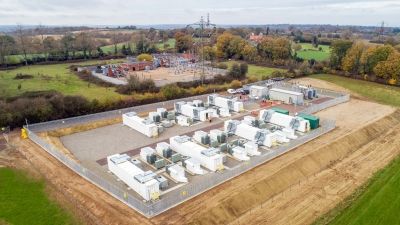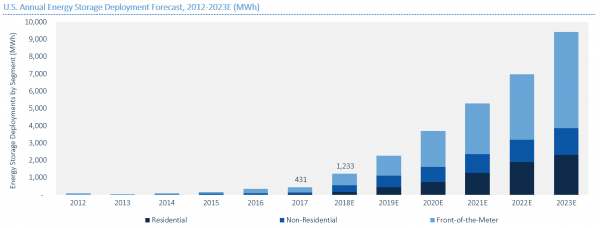Energy storage in the US set to triple over the next year
The market for energy storage is going from strength to strength and is forecast to reach new heights in the US over 2018.

The market for energy storage is going from strength to strength and is forecast to reach new heights in the US over 2018.
New data has been released from the Energy Storage Association (ESA) and GTM Research, which shows the strong growth across US states in what many hope is a crucial technology for a truly low-carbon economy.
Between 2013 and 2017, a total of 1,080 cumulative megawatt-hours (MWh) were installed in the US; and the past year grew by 27 percent with 431 MWh installed. The new forecast expects 1,233 MWh of grid-connected storage to be installed in this year alone.
This strong growth will push the sector’s market value over $1 billion by 2019, and continue exponentially in the years ahead. At the moment, it is valued at $300 million, but by 2023, it could be worth $3.8 billion, according to analysts.
Energy storage in the US has been helped by “falling costs and favorable policies” on the state level, according to Ravi Manghani at GTM Research. The major markets for the technology, such as California, Massachusetts and New York, have all created targets to grow the technology, and provided tax incentives to get there.
“We’re going to have to strike the word ‘nascent’ from our vocabularies when describing the US energy storage market”, he added.
Kelly Speakes-Backman, CEO of ESA further supported this view, commenting that “policies and regulatory frameworks that level the playing field will further encourage energy storage deployment throughout 2018 and beyond as the industry builds toward a goal of realizing 35 GW by 2025”.
Enthusiasm for different types of energy storage, primarily batteries, has grown substantially in recent years as wind and solar power has similarly increased their market share. It is hoped that storage can help solve the problem of variability in these technologies, providing clean electricity on-demand, day or night.

Source: GTM Research / ESA U.S. Energy Storage Monitor
Photo Credit: VLC Energy






